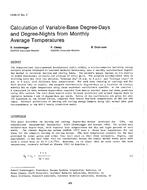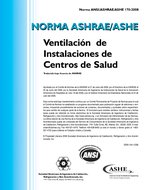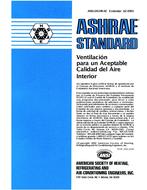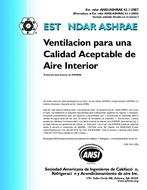Description
The Computerized Instrumented Residential Audit (CIRA), a micro-computer building energy analysis program developed at Lawrence Berkeley Laboratory, uses a monthly variable-base degreeday method to calculate heating and cooling loads. The method’s unique feature is its ability to model thermostat setbacks and storage of solar gain. The program accomplishes this by dividing each day into two periods, “average day” (8 a.m. to 8 p.m.) and “average night” (8 p.m. to 8 a.m.), with different base temperatures. For each mode (heating or cooling) and for each period (day or night), the program reconstructs degree-days as a function of average monthly day or night temperature using three empirical coefficients specific to the location . A comparison is made between degree-days computed from hourly weather tapes and those predicted using this method. The root mean square error between predicted and actual degree days is typically between 3 and 12 degree-days per month. Tables of the coefficients are given for over 150 locations in the United States, computed from hourly dry-bulb temperatures on TRY and TMY tapes. Seasonal predictions of heating and cooling energy budgets using this method show good correspondence to the DOE-2 hourly simulation model.
Units: Dual
Citation: Symposium, ASHRAE Transactions, 1985, vol. 91, pt. 2B, Honolulu, HI
Product Details
- Published:
- 1985
- Number of Pages:
- 18
- File Size:
- 1 file , 1.6 MB
- Product Code(s):
- D-HI-85-17-2




